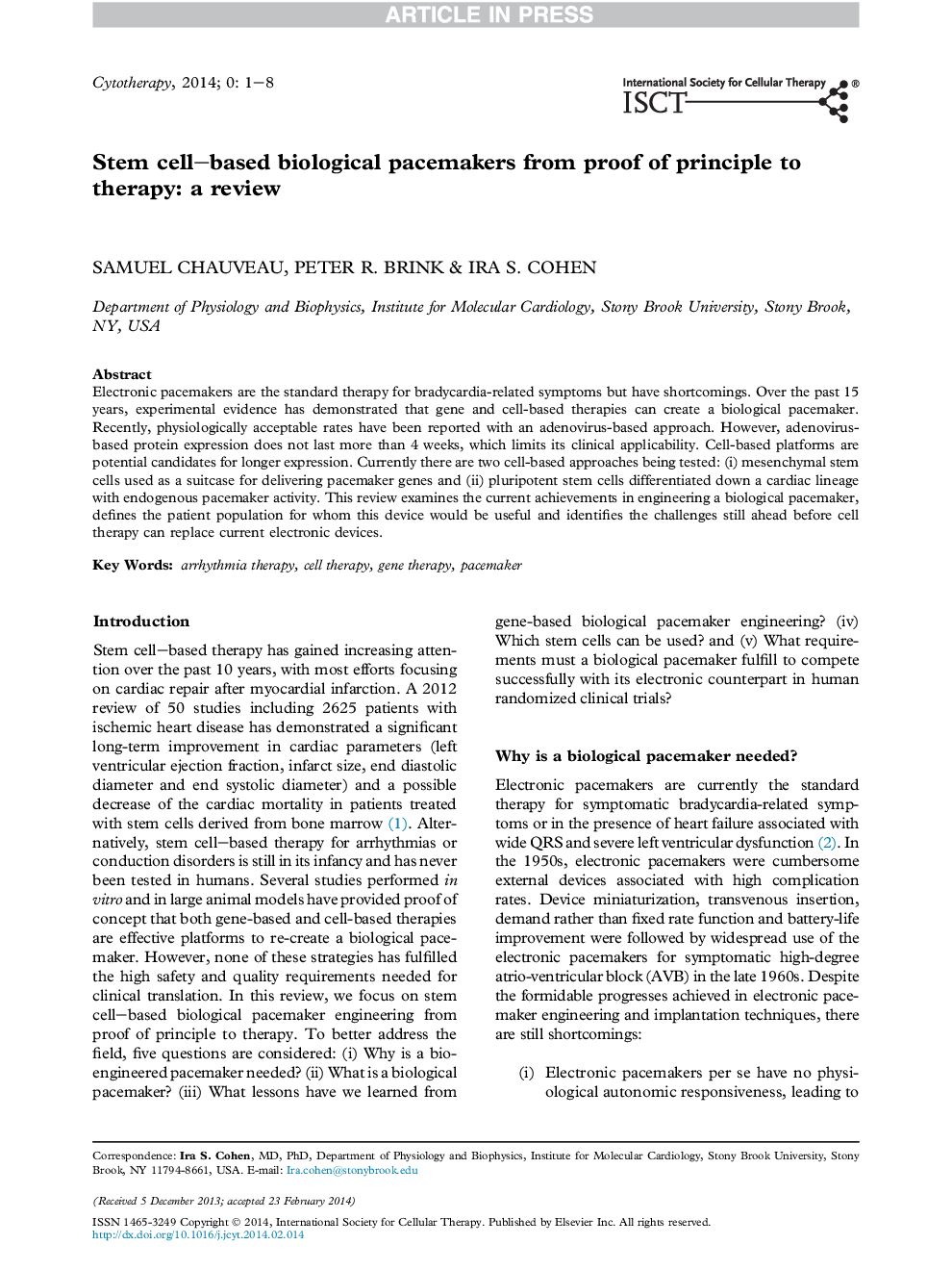| Article ID | Journal | Published Year | Pages | File Type |
|---|---|---|---|---|
| 10930405 | Cytotherapy | 2014 | 8 Pages |
Abstract
Electronic pacemakers are the standard therapy for bradycardia-related symptoms but have shortcomings. Over the past 15 years, experimental evidence has demonstrated that gene and cell-based therapies can create a biological pacemaker. Recently, physiologically acceptable rates have been reported with an adenovirus-based approach. However, adenovirus-based protein expression does not last more than 4 weeks, which limits its clinical applicability. Cell-based platforms are potential candidates for longer expression. Currently there are two cell-based approaches being tested: (i) mesenchymal stem cells used as a suitcase for delivering pacemaker genes and (ii) pluripotent stem cells differentiated down a cardiac lineage with endogenous pacemaker activity. This review examines the current achievements in engineering a biological pacemaker, defines the patient population for whom this device would be useful and identifies the challenges still ahead before cell therapy can replace current electronic devices.
Related Topics
Life Sciences
Biochemistry, Genetics and Molecular Biology
Cell Biology
Authors
Samuel Chauveau, Peter R. Brink, Ira S. Cohen,
